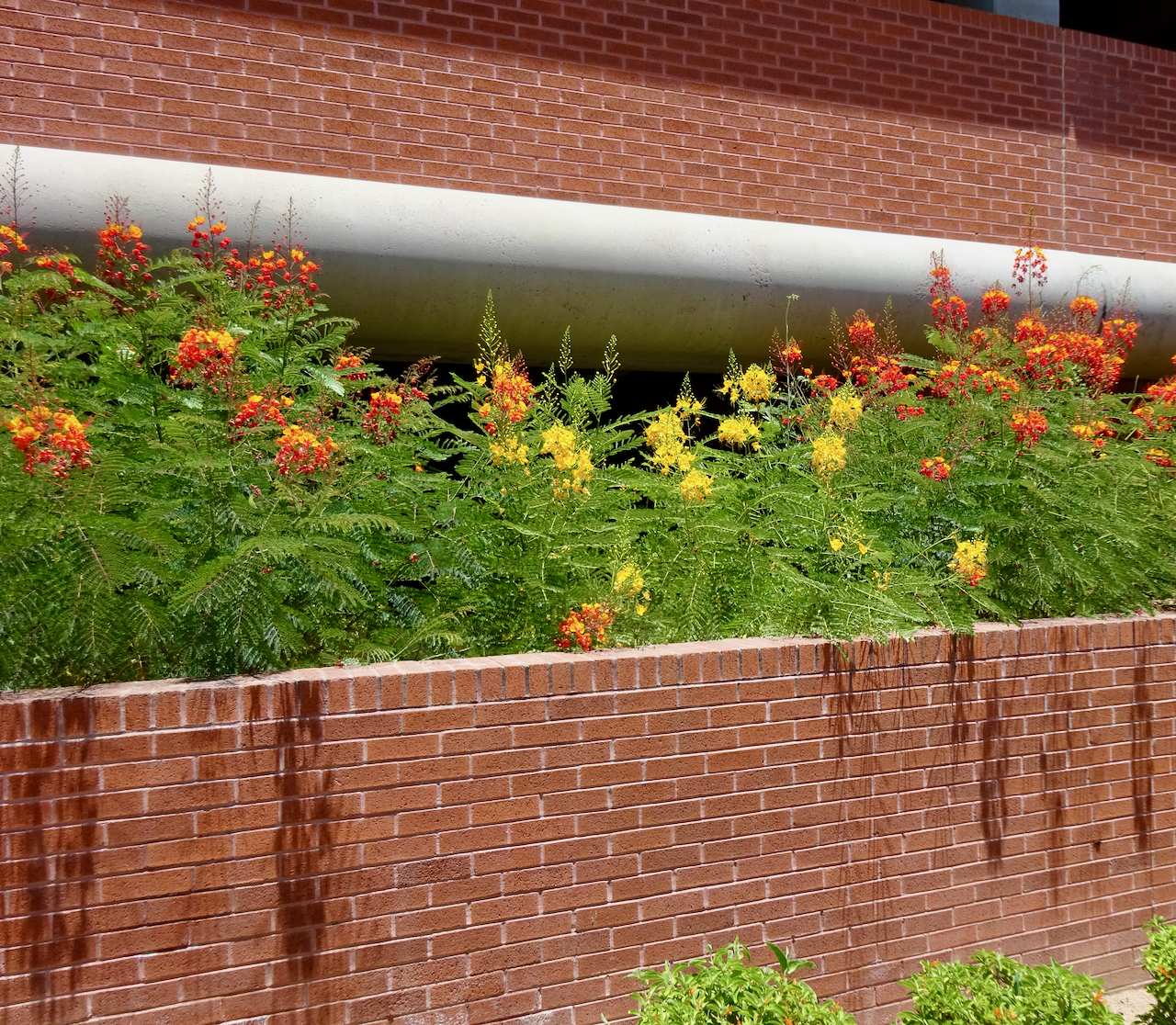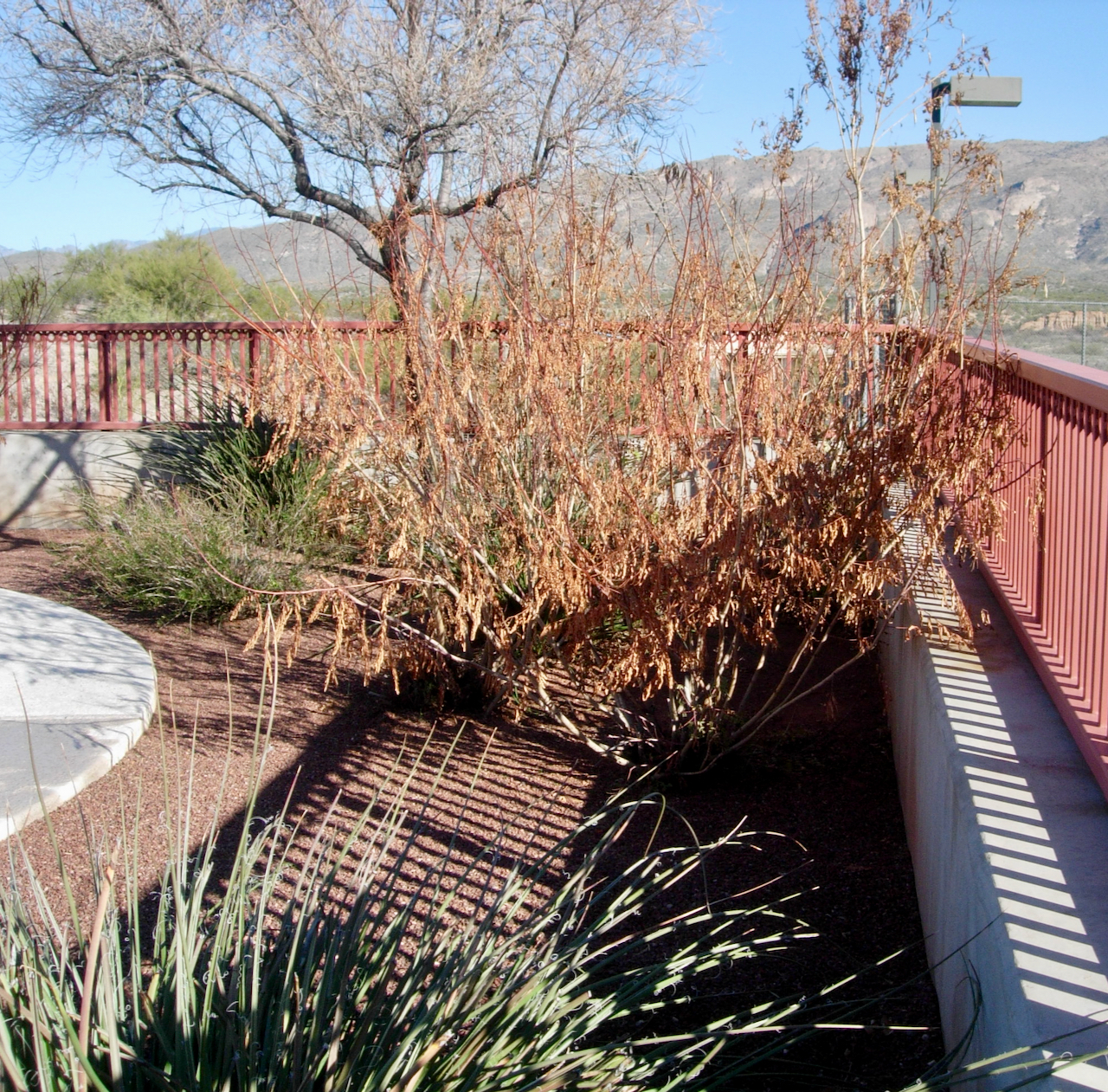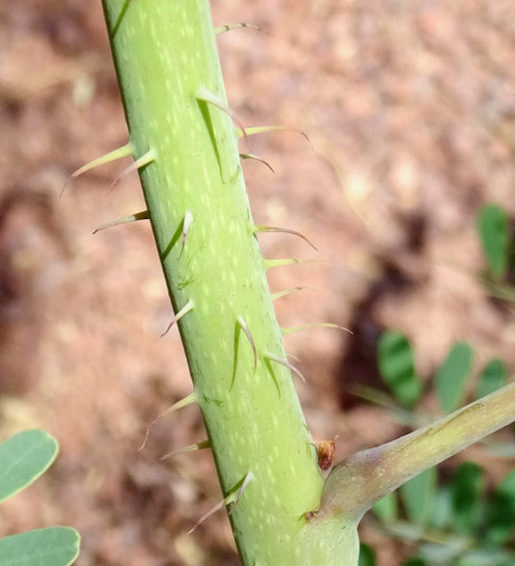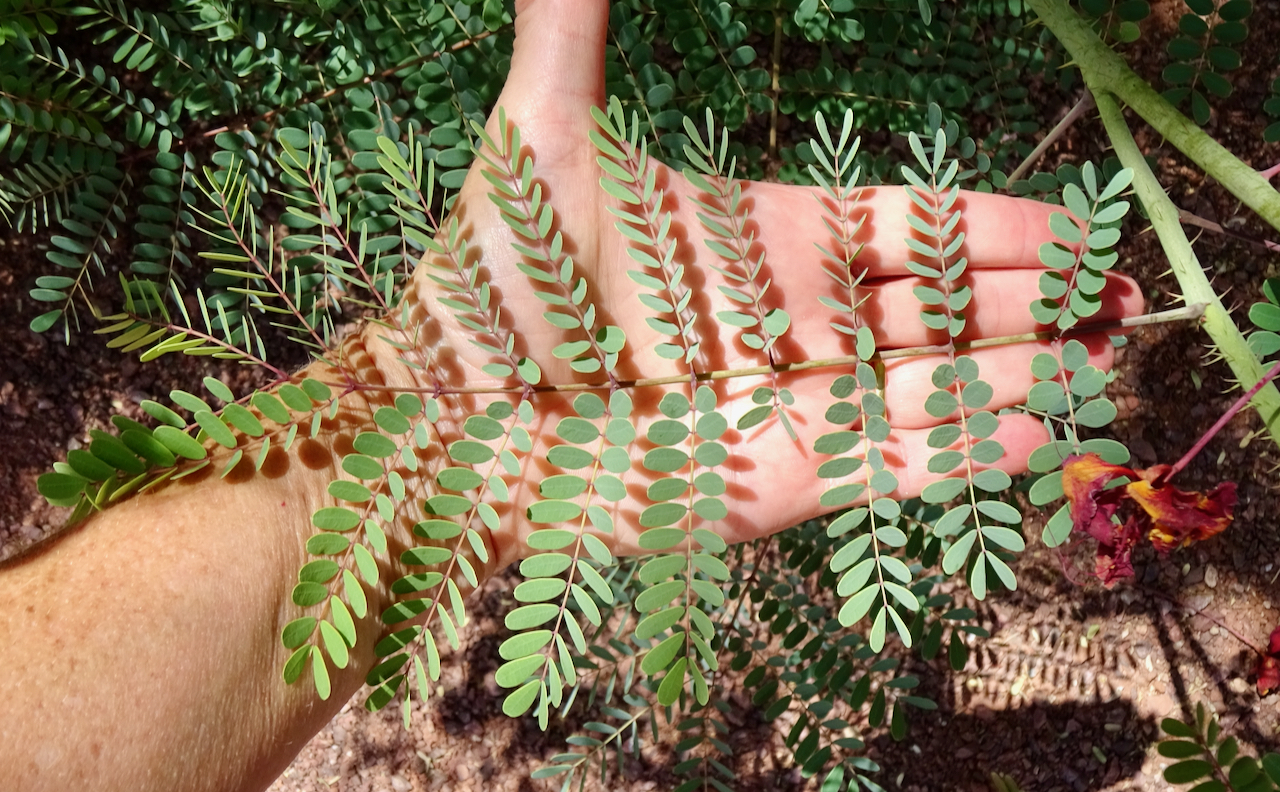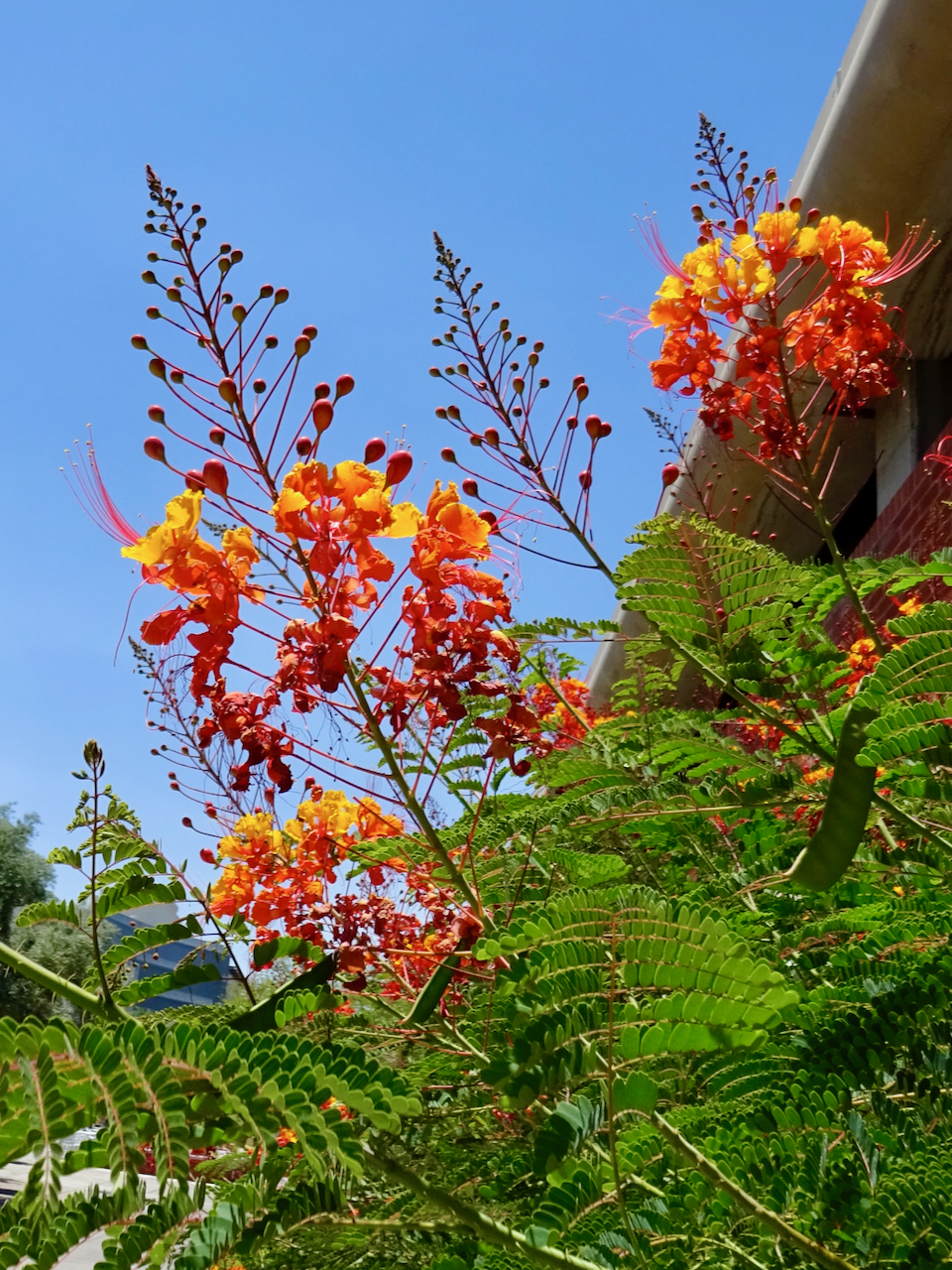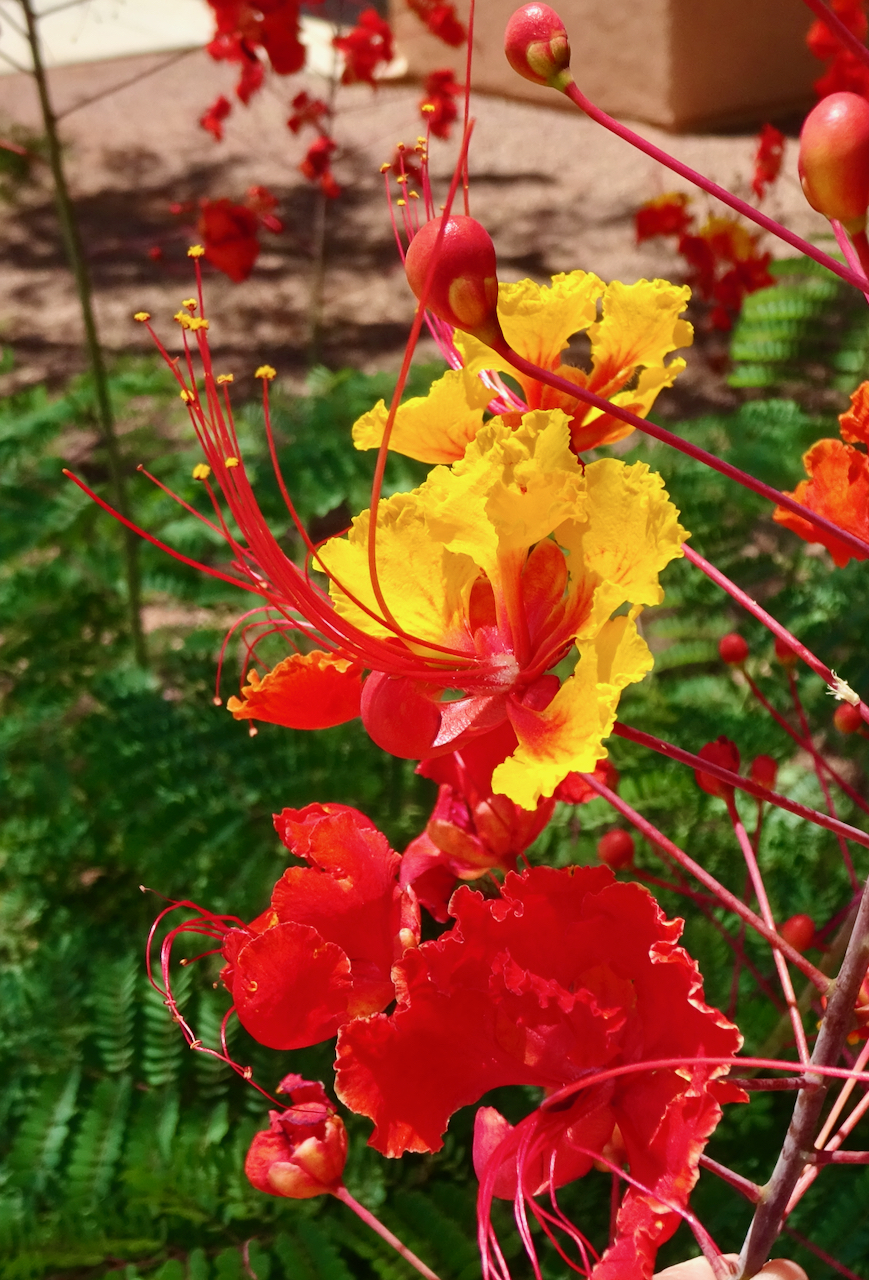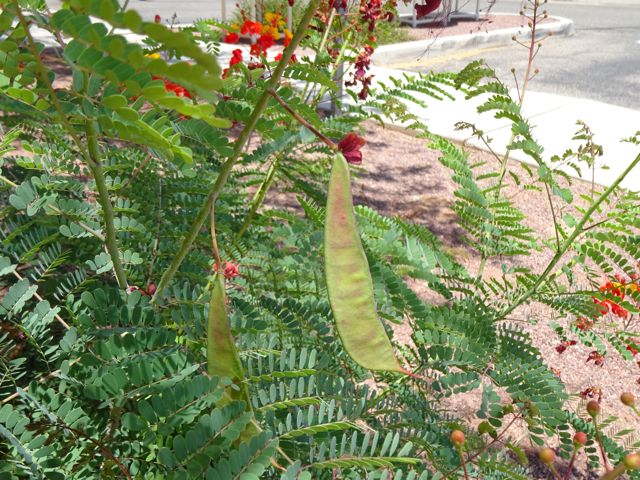Red Bird of Paradise
Caesalpinia pulcherrima
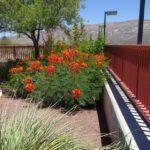
About the Plant
Red bird of paradise, often called red bird, is one of the showiest of our summer bloomers. Beginning in May in the Tucson area, tall spires of large, multicolor flowers - red, orange, yellow - appear. Flowering continues well into the fall. Red bird is thought to be native to Mexico. It is widely cultivated and also naturalized in tropical and warm subtropical regions around the world. Red bird of paradise can withstand heat - even along hot roads - but is damaged by temperatures below freezing and dies to the ground almost every winter in the Tucson area.
Though the common red bird has red-orange-yellow flowers, an all yellow-flowered variety is available under the name of 'Phoenix Bird' or just 'Phoenix'. It grows somewhat slower than the red form (note difference in height in photo above) but is just as cold sensitive.
To care for red bird, cut back the dead stems to 6-12 inches in late winter/early spring. Regrowth is rapid. In years when the plant does not die to the ground, cutting back in early spring will help control height.
Prune lightly throughout the summer to remove spent flowering stalks and developing seed pods. When ripe, the seed pod twists open and expels seeds with an audible pop. These seeds germinate very readily in an irrigated landscape situation, making this plant something of a weed. It often comes up in the middle of other plants. Red bird needs irrigation during the summer to maintain vigor.
CAUTION: the seeds and pods, and perhaps other plant parts as well, are poisonous.
Notes:
- This shrub also goes by the names of dwarf poinciana and pride of Barbados.
- A completely unrelated plant - Strelitzia reginae - also goes by the name of "bird of paradise". It is used extensively in southern California and is the official flower of the City of Los Angeles.
- Red bird of paradise is the only bird of paradise grown in Tucson that has stems covered with flexible spines. Both yellow bird and Mexican bird are not armed. Note that common names for these plants are often interchanged, especially between yellow and Mexican bird. Make sure to use the scientific name when you are purchasing plants at a nursery.
Wildlife value: attracts butterflies and hummingbirds.
More Information
Weekly Plant on birds of paradise
Horticultural information from ASU
Map of distribution in US (blue indicates the plant is not native, light blue indicates counties in which it is found)
In books:
Trees and Shrubs for the Southwest by Mary Irish, page 143.
